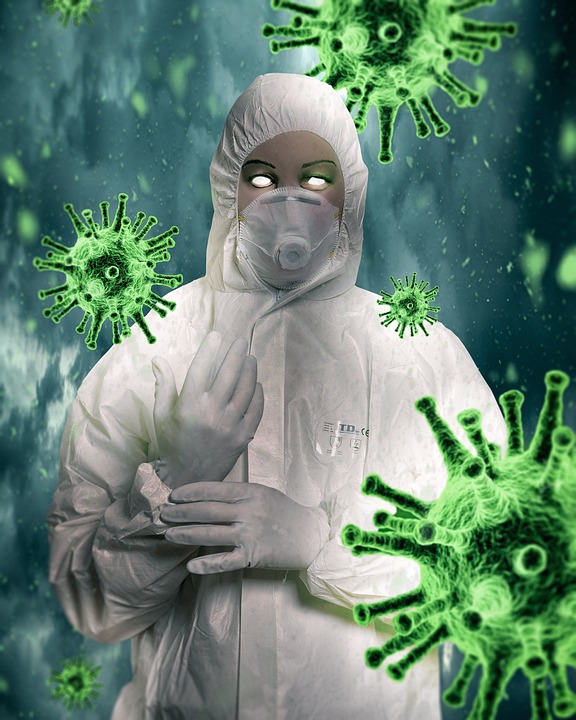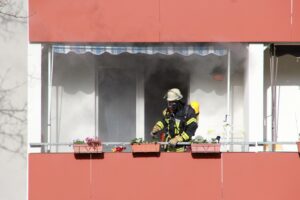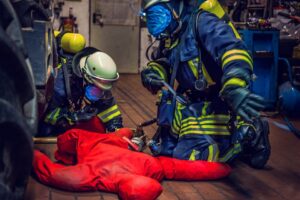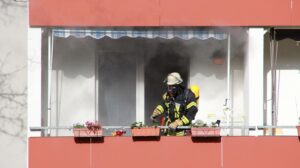Breathe Easy: Understanding the Complexities of the Human Respiratory System
Introduction
Breathing is a fundamental biological process that is often taken for granted. The human respiratory system plays a crucial role in maintaining homeostasis and supporting life by facilitating the exchange of gases—oxygen and carbon dioxide—between the body and the environment. This article explores the intricacies of the human respiratory system, its anatomy, physiology, common disorders, and the importance of respiratory health.
Anatomy of the Respiratory System
Major Components
The human respiratory system is composed of several structures, which include:
- Nasal Cavity: Air enters the body through the nostrils and is filtered, warmed, and humidified in the nasal cavity.
- Pharynx: This muscular tube serves as a passageway for both air and food.
- Larynx: Also known as the voice box, the larynx is crucial for sound production and protects the trachea against food aspiration.
- Trachea: The trachea, a tubular structure, directs air into the lungs. It is lined with ciliated mucosa that traps debris.
- Bronchi and Bronchioles: The trachea bifurcates into two primary bronchi, leading to each lung. These further branch into smaller bronchioles.
- Alveoli: These tiny air sacs are the primary site for gas exchange. Their structure allows for a large surface area to facilitate efficient diffusion of gases.
Lungs
The lungs are the central organs of the respiratory system, housed in the thoracic cavity. Each lung is divided into lobes: the right lung has three lobes, while the left lung has two. The pleura, a double-layered membrane, surrounds each lung, allowing for frictionless movement during respiration.
Physiological Processes
Inspiration and Expiration
Breathing involves two primary phases: inspiration (inhalation) and expiration (exhalation).
-
Inhalation: During inhalation, the diaphragm contracts and moves downward while the intercostal muscles pull the rib cage outward. This increases thoracic volume, creating a negative pressure that draws air into the lungs.
- Exhalation: Exhalation is usually a passive process; the diaphragm and intercostal muscles relax, causing the thoracic volume to decrease and forcing air out of the lungs.
Gas Exchange
Gas exchange occurs in the alveoli, where oxygen diffuses from the alveolar air into the blood, and carbon dioxide passes from the blood into the alveoli to be exhaled. This process is driven by differences in partial pressures of the gases.
Regulation of Breathing
Breathing is regulated by the respiratory centers in the brain, primarily located in the medulla oblongata and pons. These centers respond to chemical signals in the blood, such as rising carbon dioxide levels or decreasing oxygen levels, adjusting the breathing rate accordingly.
The Importance of Oxygen
Oxygen is crucial for cellular respiration, a process that generates ATP (adenosine triphosphate) to fuel cellular functions. Cells require a continuous supply of oxygen to produce energy and carry out metabolic tasks. The adequacy of oxygen delivery is vital for maintaining bodily functions and overall health.
Common Respiratory Disorders
The respiratory system is susceptible to a range of disorders, some of which can have serious implications for health.
Asthma
Asthma is a chronic inflammatory disease of the airways characterized by wheezing, shortness of breath, chest tightness, and coughing. Triggers may include allergens, exercise, and respiratory infections. Asthma can be managed through medications and by avoiding triggers.
Chronic Obstructive Pulmonary Disease (COPD)
COPD encompasses chronic bronchitis and emphysema, conditions often caused by long-term exposure to irritants like tobacco smoke. COPD leads to reduced airflow and difficulty breathing. Management includes smoking cessation, medications, and pulmonary rehabilitation.
Pulmonary Fibrosis
Pulmonary fibrosis is a condition characterized by scarring of lung tissue, making it increasingly difficult for the lungs to function properly. Symptoms include a persistent dry cough and shortness of breath. Treatment options are limited and focus on symptom management.
Lung Cancer
Lung cancer is one of the leading causes of cancer-related deaths worldwide. Risk factors include smoking, exposure to secondhand smoke, and environmental pollutants. Early detection is critical for improving outcomes, and treatment typically involves surgery, radiation, or chemotherapy.
The Role of Lifestyle in Respiratory Health
Smoking and Secondhand Smoke
Cigarette smoking is the most significant risk factor for most respiratory diseases—especially COPD and lung cancer. Additionally, exposure to secondhand smoke can lead to respiratory problems in non-smokers, particularly in children. Quitting smoking significantly reduces the risk of developing these diseases.
Air Quality and Pollution
Air quality can have a profound effect on respiratory health. Exposure to pollutants—such as particulate matter and volatile organic compounds—can exacerbate asthma, increase the risk of infections, and lead to chronic diseases. Strategies to improve air quality, such as reducing vehicle emissions and industrial pollutants, are crucial for public health.
Exercise and Respiratory Health
Regular physical activity improves lung function and enhances overall respiratory health. Exercise encourages deeper breathing, strengthening the diaphragm and improving oxygen delivery to tissues. Aerobic exercises, such as walking, swimming, and cycling, are particularly beneficial for respiratory health.
Technology and the Future of Respiratory Care
Advancements in technology are transforming respiratory healthcare, offering new tools for diagnosis, monitoring, and treatment.
Telemedicine
Telemedicine has grown in popularity, and respiratory care is no exception. It allows patients to consult with specialists remotely, improving access to care for those living in rural or underserved areas.
Wearable Devices
Wearable technology, such as smartwatches and fitness trackers, can monitor respiratory rates and detect irregularities in breathing patterns. These devices provide valuable data that can inform clinical decisions and improve patient outcomes.
Future Therapies
Research is ongoing to develop innovative therapies for respiratory diseases. For instance, stem cell therapy and gene therapy are being investigated for their potential to regenerate damaged lung tissue and provide long-term solutions for chronic conditions.
Conclusion
Understanding the complexities of the human respiratory system is essential for promoting respiratory health and effectively managing diseases. By recognizing the importance of lifestyle choices, advancements in technology, and the intricacies of respiratory physiology, we can take proactive steps to breathe easy and lead healthier lives. Awareness and education on respiratory health will empower individuals to make informed decisions and seek necessary interventions when needed.
References
- [Modern Footnote Source]
This article serves as a comprehensive overview of the human respiratory system, emphasizing the need for awareness and education about respiratory health. By understanding its intricacies and the factors influencing respiratory wellness, we can make informed decisions to enhance our quality of life.


























Add Comment